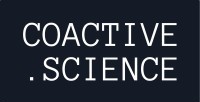Global seafood demand is soaring, yet fish farms must now navigate an unprecedented mix of harmful algal blooms (HABs), tightening ESG rules, and hungry investors asking for proof of resilience. Matsa, Coactive’s integrated Orbit-to-Onsite platform, answers that challenge by merging Sentinel/Pixxel satellite analytics, in-cage edge-AI cameras, and real-time cloud reporting into one evidence grade system. The result is early, portfolio-wide risk visibility that manual divers and spot sampling simply can’t match.
Why government partners care: EU CSRD, PEF, and UAE Net-Zero frameworks now require continuous disclosure of nutrient discharge, HAB exposure, and animal-welfare metrics. Matsa’s satellite layer flags bloom conditions days in advance, while cage cameras log oxygen stress and feeding behaviour at 1–5 fps. Those streams auto-populate regulator-ready templates eliminating back-office spreadsheets and giving agencies a fast path to “trusted data” programmes for small and large operators alike.
Why institutional investors pay attention: Feed typically eats 50%+ of operating budgets. Matsa’s appetite-detection models cut waste up to 30 %, shrink carbon intensity, and deliver 12- to 18-month payback even before accounting for stock-loss avoidance. Automated HAB and disease triage also qualifies sites for next-generation parametric covers, thereby improving balance-sheet liquidity and making debt packages easier to syndicate.

Proof on the water: In Norway, a tier-one salmon producer replaced ad-hoc inspections with Matsa’s tri-sensor stack: satellite, perimeter, and underwater cameras. They now receive instant alerts for net tears, theft attempts, turbidity spikes, and bloom signatures, cutting manual review time by 80% and reducing feed overshoot by nearly a third. Meanwhile, a study using data from Australia’s Tallebudgera Creek used hyperspectral imagery to time dredging precisely, slashing unnecessary works and protecting sensitive habitats.
Built for scale, not pilots: The platform’s modular design means a single regional hub can orchestrate dozens of leases, with AI models adapting automatically to species mix and local regulations. Cloud dashboards surface ROI, ESG, and welfare KPIs in one pane of glass: data your sustainability teams can export directly to lenders, certification bodies, or ministry portals.
Explore what’s next: Government agencies looking to de-risk blue-food supply chains, and investors seeking predictable, climate-resilient returns, are invited to download the full Matsa whitepaper or book a 30-minute briefing. We’ll show how Space-to-Sea intelligence can future-proof your aquaculture assets—while turning compliance cost into competitive edge.
